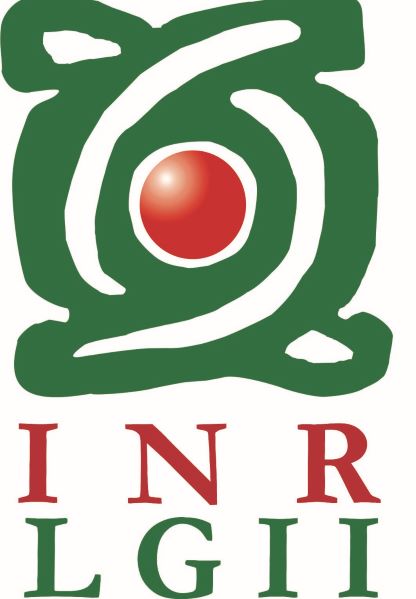Family resources in rehabilitation of the patient with disability by cerebral vascular disease
Keywords:
Cerebrovascular disease, disability, family resources, family resilience, rehabilitationAbstract
Cerebrovascular disease is an illness each time more frequent in Mexican families, which have been affected because it is a disease that can eventually cause disability to the member suffering from it. The purpose of the study is to perform an analysis about the relationship that exists between the family resources and the success of rehabilitation process. In this study were included 30 families, of which 15 were going through a successful rehabilitation process and the other 15 were not, according the Barthel index. It was applied the intrafamily relation evaluation scale which results were correlated with sociodemographic data and a statistical analysis of the responses from participants was performed. The results show differences on the following aspects: communion and support, emotional expression and difficulties perceived by families of both groups. This research provides an important approaching to the study of family inclusion on the rehabilitation processes.
References
Organización de las Naciones Unidas. Convención sobre los Derechos de las Personas con Discapacidad. 2008. Disponible en: http://www.un.org/esa/socdev/ enable/documents/tccconvs.pdf. [Recuperado el 10 de noviembre de 2011].
Sánchez M. Evento vascular cerebral. ¿Existe la calidad de vida después de uno? Boletín Epidemiológico [Internet]. 2011; 21 (28). Disponible en: http://www. salud.gob.mx/unidades/epide.
Velázquez-Monroy O, Barinagarrementería-Aldatz FS, Rubio-Guerra AF, Verdejo J, Méndez-Bello MA, Violante R et al. Morbilidad y mortalidad de la enfermedad isquémica del corazón y cerebrovascular en México 2005. Arch Cardiol Mex. 2007; 77 (1): 31-39.
Suárez-Escudero J, Restrepo C, Ramírez E, Bedoya C, Jiménez I. Descripción clínica, social, laboral y de la percepción funcional individual en pacientes con ataque cerebrovascular. Acta Neurol Colomb. 2011; 27 (2): 97-105.
Glass TA, Berkman LF, Hiltunen EF, Furie K, Glymour MM, Fay ME et al. The Families In Recovery From Stroke Trial (FIRST): primary study results. Psychosom Med. 2004; 66 (6): 889-897.
Li L, Young D, Hu Z. Longitudinal study of quality of life following stroke. Hong Kong J Psychiatr. 2001; 11 (4): 17-21.
Chang AM, Mackenzie AE. State self-esteem following stroke. Stroke. 1998; 29 (11): 2325-2328.
Kelly-Hayes M, Paige C. Assessment and psychologic factors in stroke rehabilitation. Neurology. 1995; 45 (2 Suppl 1): S29-S32.
King RB. Quality of life after stroke. Stroke. 1996; 27 (9): 1467-1472.
Parikh RM, Robinson RG, Lipsey JR, Starkstein SE,
Fedoroff JP, Price TR. The impact of poststroke
depression on recovery in activities of daily living
over a 2-year follow-up. Arch Neurol. 1990; 47 (7):
-789.
Repetti R, Taylor SE, Seeman TE. Risky families: Family social environments and the mental and physical health of offspring. Psychological Bulletin. 2002; 28 (2): 330-366.
Muñoz MM, Haz AM. Familias multiproblemáticas y en riesgo social: características e intervención. Psykhe. 2007; 16 (2): 43-54.
Walsh F. Strengthening family resilience. New York: Guilford; 2006.
Ungar M. Families as navigators and negotiators: facilitating culturally and contextually specific expressions of resilience. Fam Process. 2010; 49 (3): 421-435.
Luthar SS, Cicchetti D, Becker B. The construct of resilience: a critical evaluation and guidelines for future work. Child Dev. 2000; 71 (3): 543-562.
Black K, Lobo M. A conceptual review of family resilience factors. J Fam Nurs. 2008; 14 (1): 33-55.
Min-Feng H. Resilience in chronic disease: the relationships among risk factors, protective factors, adaptive outcomes, and the level of resilience in adults with diabetes. PhD thesis, Queensland University of Technology; 2009.
Campos B, Graesch AP, Repetti R, Bradbury T, Ochs E. Opportunity for interaction? A naturalistic observation study of dual-earner families after work and school. J Fam Psychol. 2009; 23 (6): 798-807.
Fruggeri L. Famiglie. Dinamiche interpersonali e processi psicosociali. Roma: Carocci; 2006.
Jaracz K, Kozubski W. Quality of life in stroke patients. Acta Neurol Scand. 2003; 107 (5): 324-329.
Repetti RL, Wang S, Saxbe D. Bringing it all back home: How outside stressors shape families’ everyday lives. Current Directions in Psychological Science. 2009; 18 (2): 106-111.
Sluzki CE. Personal social networks and health: conceptual and clinical implications of their reciprocal impact. Fam Syst Health. 2010; 28 (1): 1-18.
Fruggeri L. Diverse normalitá. Psicologia sociale delle relazioni familiari. Roma: Carocci; 2005.
Ordaz BG, Monroy LL, López RM. Hacia una propuesta de política pública para familias del Distrito Federal. México: INCIDE Social; 2010.
Molinari L, Everri M, Fruggeri L. Microtransiciones familiares: observación del proceso de cambio en las familias con hijos adolescentes. Family Process. 2010; 49 (2): 236-251.
Fruggeri L. Osservare le famiglie. Metodi e tecniche.
Roma: Carocci; 2010.
Rivera-Heredia ME, Padilla-Barraza MG. Repetición intergeneracional de roles: factores que la predicen
[Tesis de Licenciatura]. Guadalajara, México: ITESO,
Escuela de Psicología; 1992.
Downloads
Published
How to Cite
Issue
Section
License
Copyright (c) 2017 Instituto Nacional de Rehabilitación Luis Guillermo Ibarra Ibarra

This work is licensed under a Creative Commons Attribution 4.0 International License.
© Instituto Nacional de Rehabilitación Luis Guillermo Ibarra Ibarra under a Creative Commons Attribution 4.0 International (CC BY 4.0) license which allows to reproduce and modify the content if appropiate recognition to the original source is given.



